
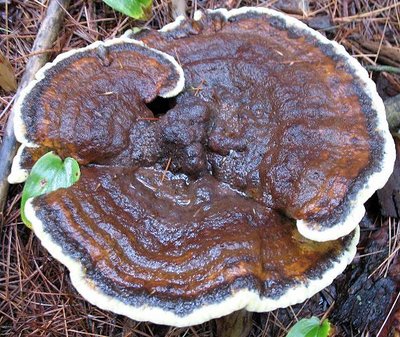
#5. Striated Fungus of some sort, I love the colors.

#7. Puffball mushroom, Lycoperdon Perlatum - edible, but I wouldn't recommend trying it unless you are versed in how to tell it apart from another common species which looks quite similar and is somewhat poisonous.

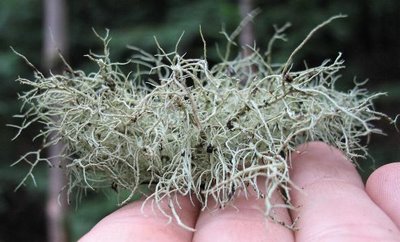
#9. Staghorn Lichen, Letharia sp.
 Jewelweed, Impatiens Capensis - Yeah, I know it's not a fungus, but it deserves honorable mention because the expressed juices from pulverized stems & leaves can serve as a wonderful topical treatment for some of the varieties of fungi which infests humans & other mammals.
Jewelweed, Impatiens Capensis - Yeah, I know it's not a fungus, but it deserves honorable mention because the expressed juices from pulverized stems & leaves can serve as a wonderful topical treatment for some of the varieties of fungi which infests humans & other mammals.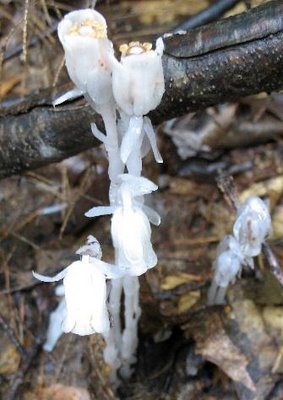
Indian Pipe, Monotropa Uniflora - Again, not a fungus, but it also deserves honorable mention because it is one of the only plants you will find growing around here which does not need chorophyll to survive, it lives as a parasite feeding off of a common soil fungus found around trees.
I intend to have a good pictorial book on fungus species identification by next year, any suggestions? I would at some point like to start harvesting wild edibles (and yes, I know it is dangerous if you don't know what you are doing).
I intend to have a good pictorial book on fungus species identification by next year, any suggestions? I would at some point like to start harvesting wild edibles (and yes, I know it is dangerous if you don't know what you are doing).


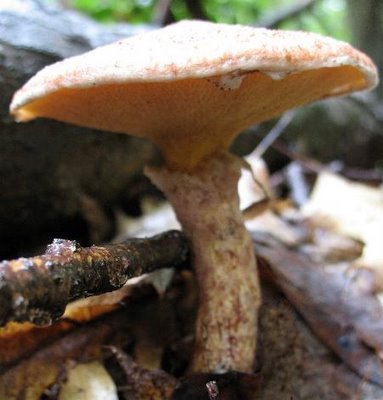

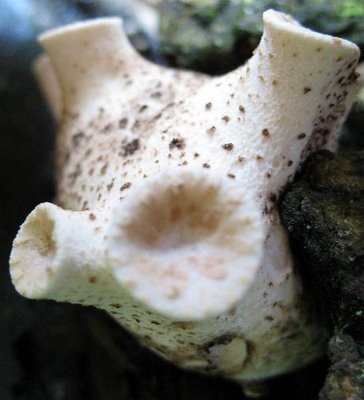
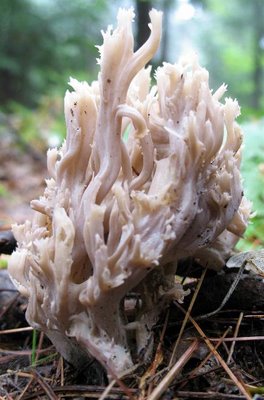

7 comments:
I used to use smashed Jewelweed on spots of poison ivy when I was a kid, to get rid of the itching. Haven't tried it recently...
Hi there,
I'm a west coast mushroomer, plus it is hard from photos, but I do have some directions to steer your ID'ing:
1.Looking a bit Cortinarius-like, because the second photo suggests the underside/cap edge has the characteristic rusty-spore cortina: do you have another photo of it?
2.Boletus or Suillus
3. hmm....underside of a Suillus or Boletus maybe?
4. So cool! Would love to know what this is!
5. Looks like Phaeolus schwienitzii, or Schweinitz's Butt Rot, but then it could be other things :-)
6. Ramaria or Clavaria possibly? You can probably sort out the genus, but species are hard with many coral fungi unless you have a microscope
8. Arg I think I should know what this is... If you start by looking under waxy cap, Hygrocybe ... that might be a good direction.
cheers,
J
Whoops - I forgot to add in previous post: http://www.pfc.cfs.nrcan.gc.ca/cgi-bin/matchmaker/matchmaker.asp is excellent and a fun way to ID mushrooms. It's the wrong coast, but there are lots of mushrooms that are bi-coastal, and at least you could get some to genus this way.
cheeers,
J
Hi!
If you're looking for a good starting place, I would recommend a book by David Arora called 'All that the Rain Promises and More.... A Hip Pocket Guide to Western Mushrooms'. The pictures are great, the colors are accurate and it covers the basics. It also makes the subject fun and exciting! Also, each entry contains a reference to more information in 'Mushrooms Demystified', a MUCH larger, more scientific volume that is the standard textbook for many mycology classes. So the first gets you hooked, and the second will keep you learning for years. It's good to have at least 3 or 4 books for identification, because the colors in the photos can vary and sometimes that's the only way to tell an edible from a poisonous mushroom. Check out the Audobon Society book and Simon & Scheuster's (sp?) Guide as well. I hope that helps. Good Luck and Happy Hunting!!
-Chrystie
wow...I've never seen a blue one like that around here before. Where / when did you find it?
Amy, yes, how could I forget to mention that??!! I even did so this summer after a known exposure to poison ivy when there was no water & soap handy to wash the urushiol (the oil in poison ivy which causes the reaction) off. I ended up twisting & pulverizing bundles of the stuff all the way down the mountainside, rubbing it on my arms as I went... I was a bit green by the time I got back to camp, but it worked marvelously and I had no reaction.
Kalapurka, thanks... and many thanks' to all of the anonymous posters with helpful ID information and recommendations!
Shelby, I found that one around mid-late august up on a mountain on the edge of my town, it had been raining non-stop for several days so the mushrooms were in full-swing, popping out everywhere that there was rotting tree matter. I don't see this particular kind often either.
Splendid pictures.
Post a Comment